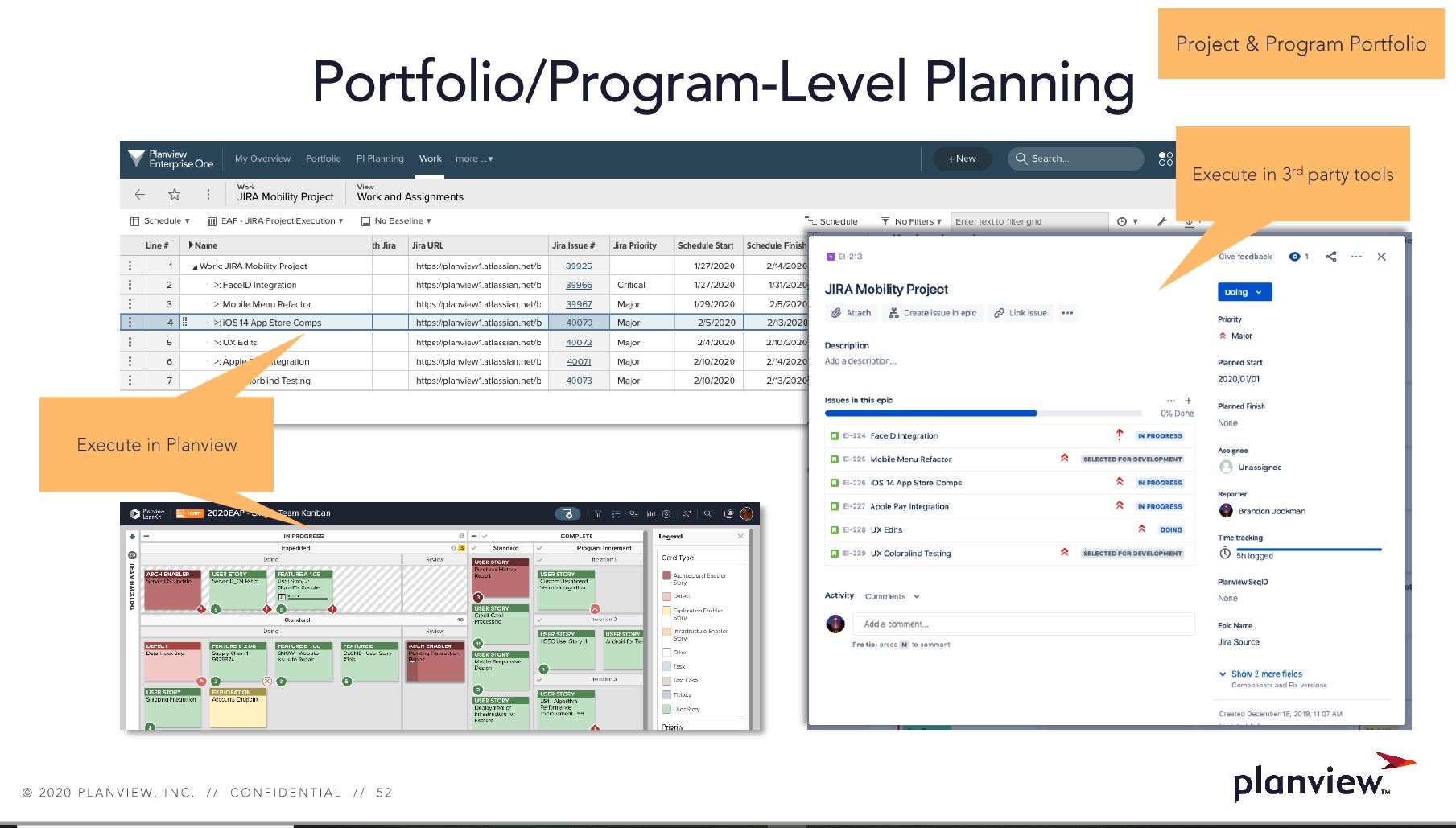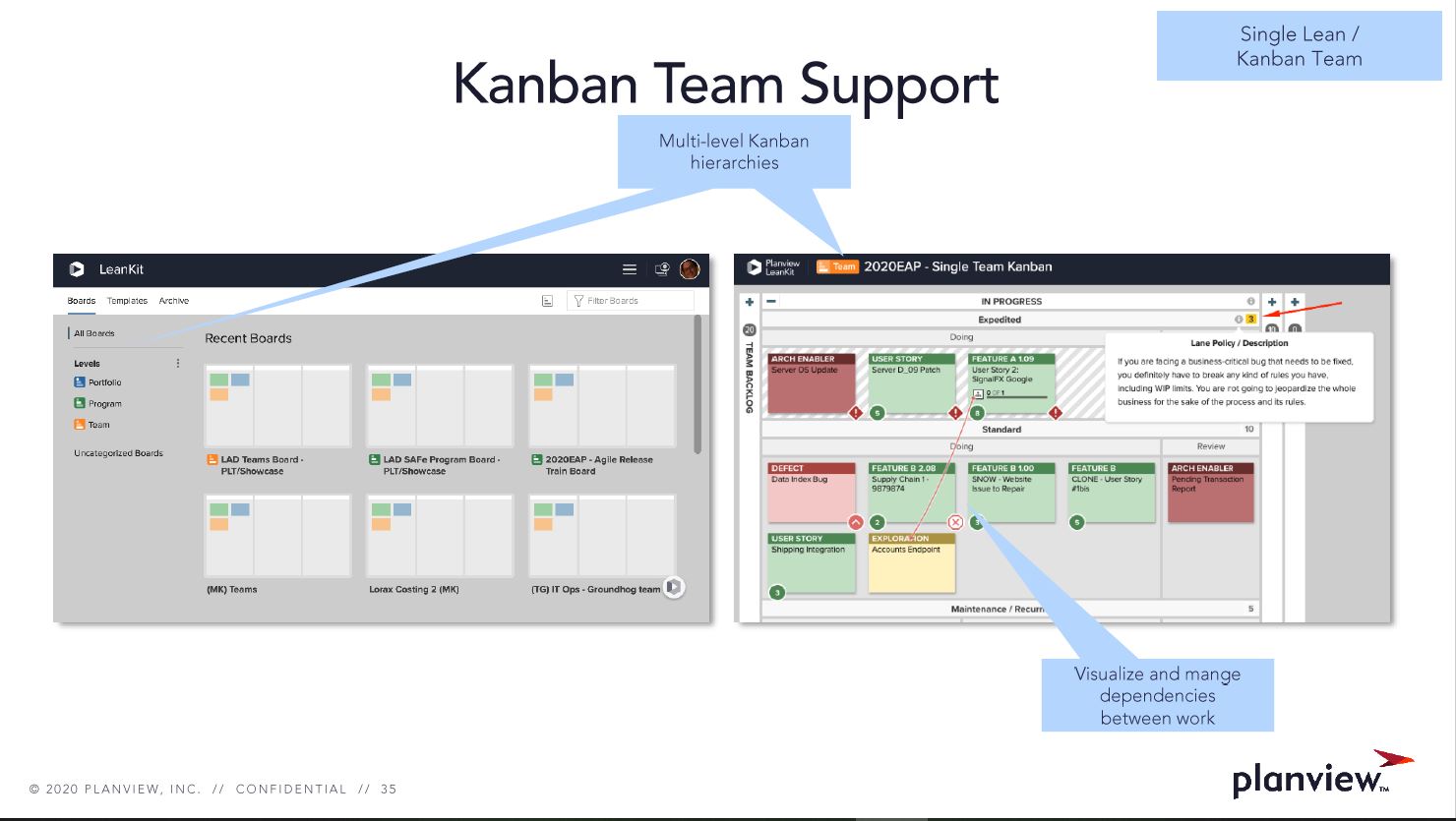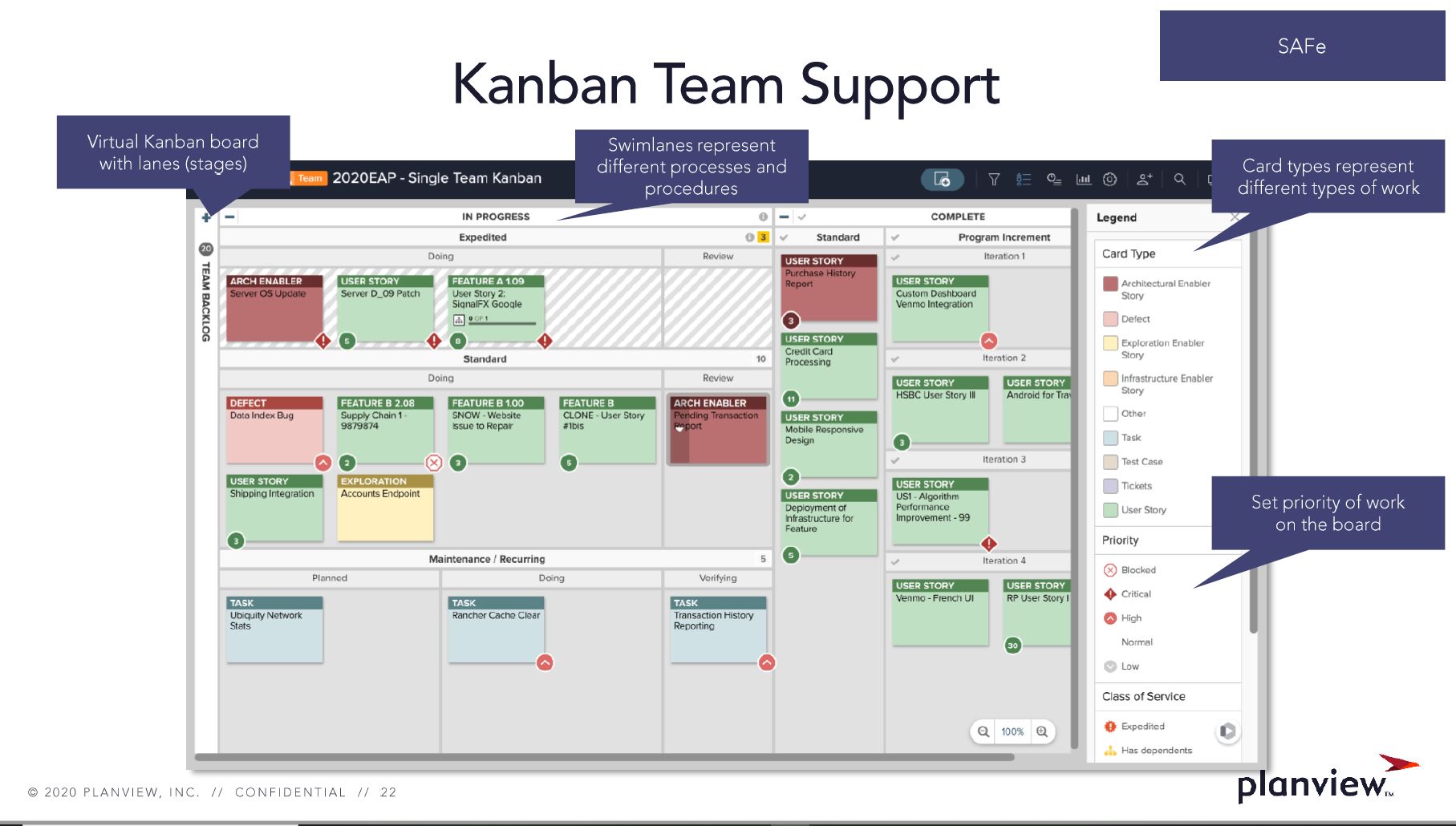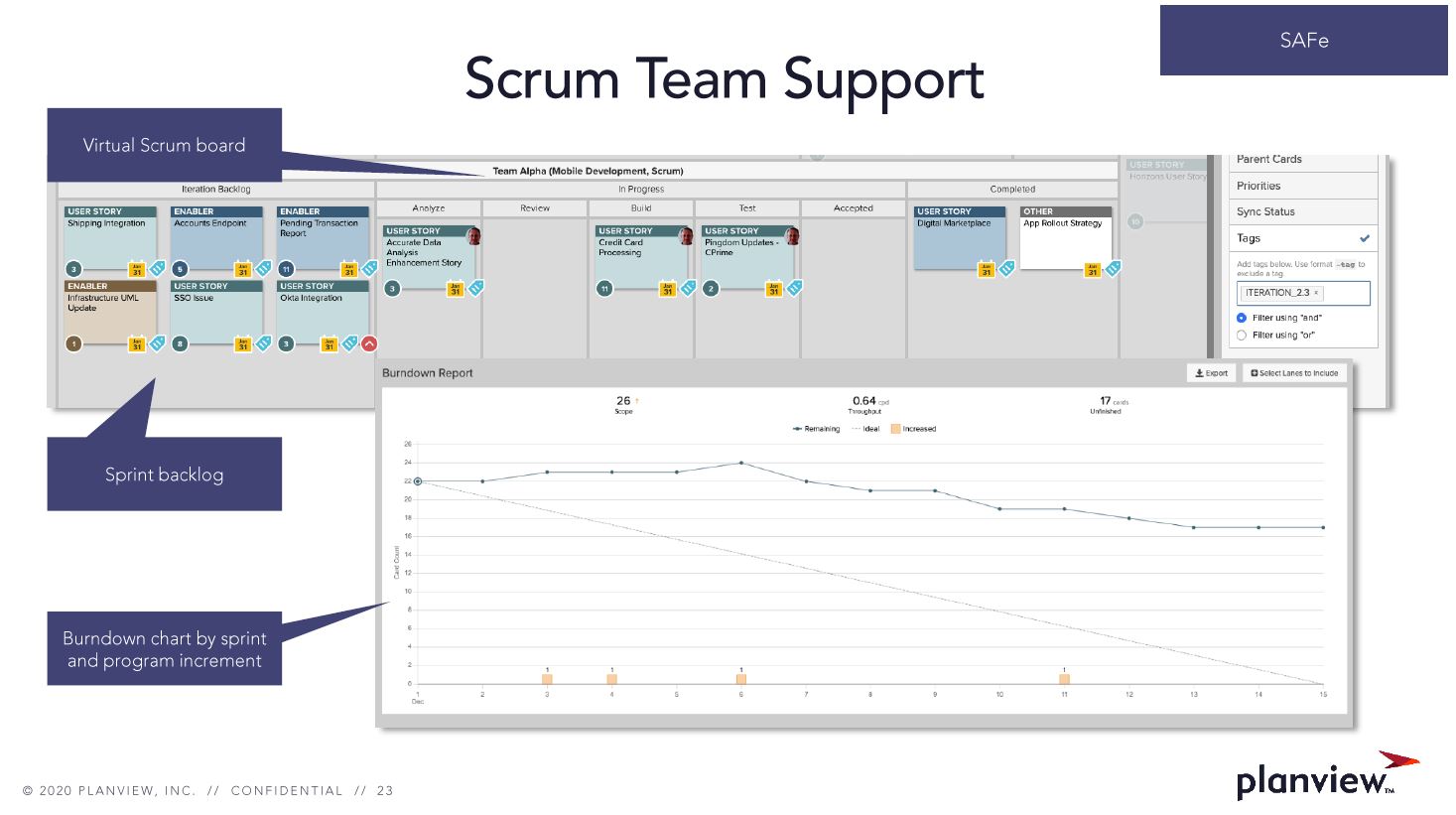 Agile has officially moved beyond independent application groups to play a critical role in managing work across the broader enterprise. As a result, organizations need Agile planning software that supports a variety of work methodologies and processes, such as Lean, Agile, Scrum, Kanban, Scrumban, and even traditional project delivery. Whether your organization is new to Agile, shifting from project delivery to product delivery, or scaling Agile with frameworks like SAFe®, Agile planning tools empower teams to deliver enterprise agility at scale.
Agile has officially moved beyond independent application groups to play a critical role in managing work across the broader enterprise. As a result, organizations need Agile planning software that supports a variety of work methodologies and processes, such as Lean, Agile, Scrum, Kanban, Scrumban, and even traditional project delivery. Whether your organization is new to Agile, shifting from project delivery to product delivery, or scaling Agile with frameworks like SAFe®, Agile planning tools empower teams to deliver enterprise agility at scale.
- Monthly, weekly, daily, and even continuous deliverables based on business outcomes
- Increased visibility into the flow of work
- Requirements captured in epics, features, user stories, and tasks
- Collaborative and shift-left practices, such as test-driven development
Different teams can leverage these capabilities in different ways depending on their requirements and Agile maturity. Let’s look at four use cases that demonstrate how various teams in an enterprise Agile organization can use Agile planning software to deliver work more effectively.
Agile Use Case 1: Project and Program Portfolio Team
As organizations shift to modern methodologies, they must provide more traditional teams with appropriate Agile planning tools. This often begins with a traditional portfolio management approach sitting on top of Agile delivery.
Let’s say that a loan application center of excellence at a large financial organization traditionally used a waterfall approach to project delivery. The business, however, recognized that Agile teams were delivering more effectively, so the business embraced and supported an Agile initiative, reorganizing teams into Agile teams and teams of teams (Agile Release Trains – ARTs). The loan application center may now decide to incorporate and scale Agile Program Management, while still supporting their established PPM workflows, due to the increase in effectiveness and productivity from the Agile delivery teams.
This Agile use case requires a modern approach to portfolio management. By embracing the Agile happening within certain pockets of the organization, the loan application center can drive higher productivity and increase delivery without greatly impacting some of its more entrenched portfolio management processes. Key capabilities include portfolio/program level planning, release and epic forecasting, Scrum, and backlog management, time tracking, and 3rd-party integration features.

Agile Use Case 2: Single Lean/Kanban Team
In many organizations, enterprise Agile adoption starts with a single team and works its way up. This scenario requires comprehensive support for that original team as well as the ability to eventually scale to the program level.
For instance, say the Big Data team for a retail chain company is responsible for dealing with complex data sets across the business, including in-store and online sales. The team used multiple tools to track and manage their projects, which made it difficult to visualize who was working on what, when. They had no view into blockers or bottlenecks, resulting in slower delivery of business-critical information to the business.
A single Lean/Kanban team interested in understanding data flow across teams and departments, like this Big Data group, needs to drive Kanban at both the program and team levels. Doing so requires sophisticated Agile Program Management capabilities, with features including Kanban, backlog management, roadmapping, and DevOps visibility.

Agile Use Case 3: Scaling with SAFe
More mature Agile enterprises face the need to scale Agile adoption across teams and departments. One of the most common approaches for scaling Agile Program Management is the Scaled Agile Framework (SAFe).
What does scaling with SAFe look like in practice? Envision an engineering department in the automotive industry that is responsible for the innovation of autonomous cars, and the application used to be self-driving. Agile is well entrenched in their individual teams, but they need a way to scale their Agile teams and release trains to deliver in a systematic, coordinated way and gain the visibility required to release new innovations to market.
This team needs an enterprise Agile planning tool that specifically supports portfolio SAFe to ensure that all of the work across the various departments are prioritized and rolled up to a common goal and purpose. This includes managing portfolio epics, ranking the portfolio priorities, aligning priorities to value streams and their appropriate release trains. It also means ensuring information is visualized and communicated to the delivery teams during Program Increment (PI) Planning. Another key importance to note, is the ability to connect all Agile delivery teams via 3rd-party integrations to capture a complete picture of the work to be done.

Agile Use Case 4: Distributed Agile
Enterprise Agile planning tools are also essential for distributed Agile teams. Departments with employees in multiple locations have specific requirements for implementing Agile Program Management. This Agile use case will continue to grow in relevance as more organizations move to remote working following current economic and health trends.
As an example, say a supply chain management team has multiple teams located across the globe. They leverage different ways of working, including a mix of Scrumban, Scrum, and Kanban, but want to improve collaboration and gain visibility into teamwork. In spite of geographical distance, they need to quickly and accurately identify blockers and risks and keep the supply chain moving.
Agile teams like this one must consider both their organizational circumstances and Agile maturity as well as the specific needs of a co-located workforce. Enterprise Agile planning capabilities like team collaboration tools, DevOps visibility, Scrum, and Kanban are particularly relevant to distributed teams. Teams must also be connected together, with the ability to visually manage the flow of work and value without concern to their physical locations.

Every organization is unique and will take a different path on its journey to the Agile enterprise. When selecting an enterprise Agile planning tool, consider your use cases and how Agile planning software can support your teams today and in the future.
For a deeper dive into Enterprise Agile Planning tools, read the Gartner Enterprise Agile Planning Tools Magic Quadrant.




